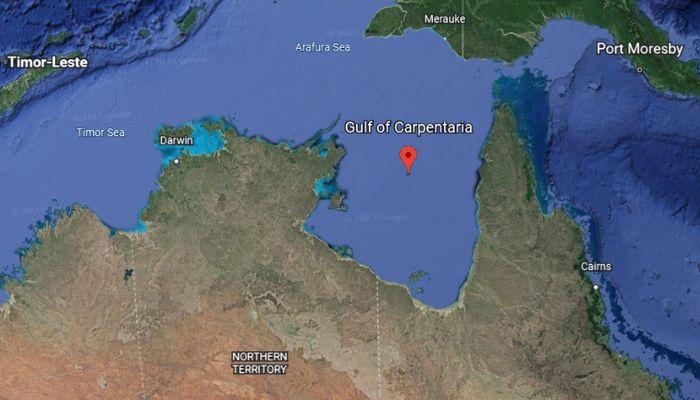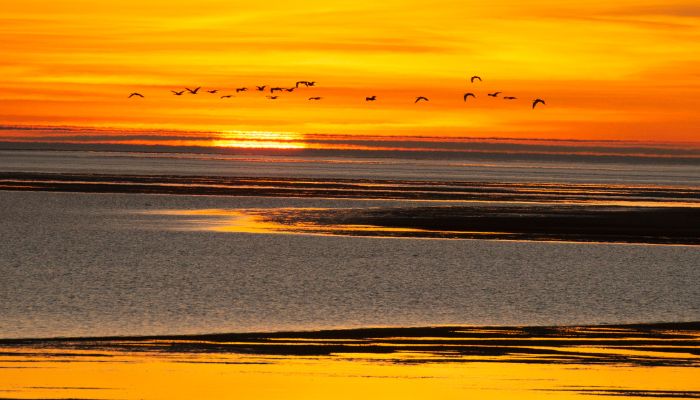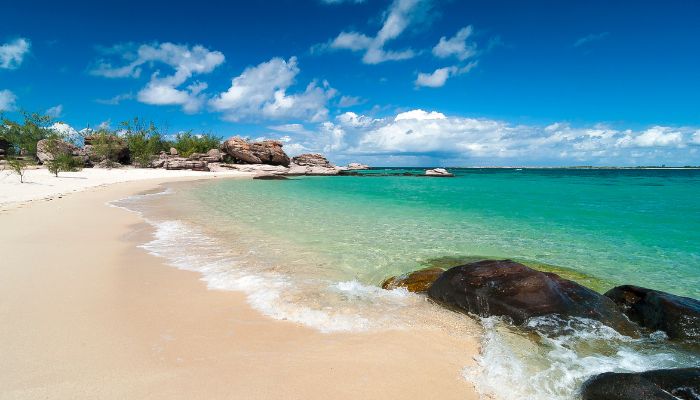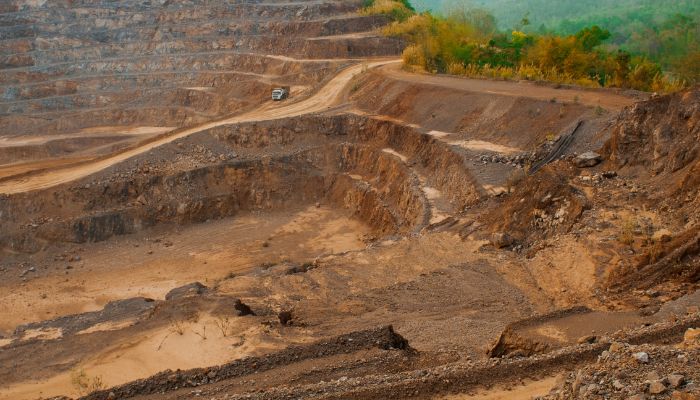Welcome to the captivating world of the Gulf of Carpentaria, a rectangular sea nestled in the northern part of Australia. This expansive yet shallow water body is surrounded by the Arafura Sea, which acts as a natural divide between Australia and New Guinea.
Table of Contents
The Gulf’s Enchanting Location
Situated approximately 800 km from the city of Darwin, the Gulf of Carpentaria is easily accessible and is in close proximity to Papua New Guinea and the island country of Indonesia. To the south of the Gulf lies the famous Gulf Country, known for its woodlands and the scenic Cape York Peninsula. This region is home to the Carpentaria tropical savanna, the largest savanna woodland in the world. On the western side of the Gulf, you’ll find the stunning Arnhem Land.
Awe-Inspiring Dimensions
Stretching 700 km from north to south, the Gulf of Carpentaria covers an impressive 300,000 square kilometers of area. At its mouth, the Gulf measures 590 kilometers in width, broadening to around 675 kilometers as you venture southward. The average depth of the Gulf’s waters ranges from 55 to 66 meters, with the maximum depth not exceeding 82 meters. Experience tides ranging between 2 to 3 meters, adding to the allure of this natural wonder.

A Window to the Past: Formation of the Gulf
The Gulf of Carpentaria has its roots in the Quaternary Period, the most recent period of the Cenozoic era. Approximately 18,000 years ago, during the peak of the last ice age, the Gulf did not exist. Instead, the area was dry land, with a shallow lake occupying its present-day location. The sea level at that time was 120 meters lower than it is today. As the climate cooled and the sea levels rose, a shallow lake formed, which eventually transformed into the Gulf of Carpentaria. Today, this epicontinental sea stands as a testament to the ever-changing nature of our planet.
Climate: Hot, Humid, and Captivating
The Gulf of Carpentaria experiences a hot and humid climate with two distinct seasons: the dry season and the monsoon season. During the dry season, which lasts from April to November, the Gulf is characterized by dry southeast-to-east flowing winds. These winds are a result of high-pressure systems in the southern region. In contrast, the monsoon season brings heavy rainfall from December to March, causing flooding in low-lying areas close to the Gulf. The Gulf also experiences tropical cyclones from November to April, which contribute to the transfer of sediments along the coast.

A World of Coral Reefs and Marine Life
Dive into the fascinating underwater world of the Gulf of Carpentaria, renowned for its fringing reefs and diverse coral colonies. Previous beliefs held that only fringing corals existed in the Gulf’s waters, but research expeditions in 2003 and 2005 uncovered patch reefs that were previously undetected. These captivating reefs, covering approximately 300 square kilometers, were revealed through the use of advanced multibeam swath sonar technology. The Gulf’s patch reefs, formed during cooler climate periods with lower sea levels, showcase the mesmerizing wonders of nature.
Rivers Flowing into the Gulf
The Gulf of Carpentaria is blessed with the presence of several prominent rivers, which enhance its natural beauty. One such river is the Roper, a perennial river in Australia’s Northern Territory. This river meanders for a thousand kilometers, with fifteen tributaries joining its flow before entering the Gulf. The Walker River, which forms an estuary at its mouth, and the Wilton River, a tributary of the Roper, are among the other rivers that enhance the Gulf’s allure. Additionally, numerous rivers originating from the Cape York Peninsula drain into the Gulf, including the Mitchell, Smithburne, Alice, Mission, Wenlock, Archer, and Staaten rivers.

Protecting Nature’s Bounty: The Gulf’s Marine Park
Immerse yourself in the wonders of the Gulf of Carpentaria’s Marine Park, a testament to the conservation efforts of the indigenous tribes who call this area home. One of the eight parks under the North Marine Parks Network’s management, this Marine Park boasts a rich history and cultural heritage. Spanning over a vast area of 23,771 square kilometers, this Marine Park is located near the Wellesley Islands, an essential region for the Yangkaal, Lardil, and Gangalidda tribal communities. These indigenous tribes play a vital role in preserving the Marine Park and live harmoniously with nature. The park’s diverse terrain encompasses submerged coral reefs, enchanting coastal areas, and majestic hills. Encounter various marine species, including endangered turtles, seabirds, sea snakes, and sharks, as you explore the Marine Park’s serene waters.
The Splendor of Groote Eylandt
Among the many islands adorning the Gulf of Carpentaria, Groote Eylandt holds the distinction of being the largest. Situated just 50 km from the Northern Territory and approximately 390 miles from Darwin, this island covers 2,326 square kilometers of stunning natural beauty. Groote Eylandt is home to 14 clans of native Aboriginal people, who cherish their culture, traditions, and the Anindilyakwa language. Recently opened to the public, this island offers a range of activities, including tours of ancient rock art sites, sports fishing, and swimming. Visitors can revel in the abundance of marine life, such as marlin, Spanish mackerel, queenfish, coral trout, and tuna, found in the coastal waters surrounding the island. With its rich display of wildlife, including 27 native mammal species, Groote Eylandt stands as one of Australia’s most diverse islands. The island also boasts vast manganese reserves and is home to several mines operated by the GEMCO mining company.

A Journey Through History: European Exploration
Before Europeans arrived in the region, the Gulf of Carpentaria was inhabited by native Australian tribes who spoke Yulluna and Kayardild languages. European exploration of the area began with Willem Janszoon, who visited the Gulf in 1605 and 1606. Later, in 1623, Jan Carstensz explored the region and named it Carpentaria in honor of Pieter de Carpentier, the Dutch East Indies Governor-General. This region was further explored by Dutch expeditions between 1605 and 1628, with Abel Tasman mapping the south and west coasts in 1644. In 1802-03, Matthew Flinders meticulously mapped and charted the Gulf’s surroundings. Notably, in 1860, Robert O’Hara Burke and William John Wills led the first overland expedition to the Gulf, departing from Melbourne and arriving at the Bynoe River mouth the following year.
A Wealth of Natural Resources
The Gulf of Carpentaria is a treasure trove of natural resources, making it an integral part of the local economy. Prawn fishing thrives in the Gulf’s waters, while zinc, manganese, lead, and silver can be found in mines located near the McArthur River. The Queensland side of the coast is home to the Century Zinc mine, further augmenting the region’s mineral wealth. Seagrass regions in the Gulf enabled the development of shrimp farming, which has flourished since the 1960s. Karumba, a town located in the southeastern part of the Gulf, serves as the hub of this industry, exporting an abundance of banana prawns to various destinations. Groote Eylandt is rich in manganese reserves, and bauxite can be found in deposits at Weipa on the Cape York Peninsula and the Gove Peninsula in Arnhem Land. These resources, along with the thriving cattle industry, have contributed to the growth of coastal settlements and improved transportation and communication networks with the rest of Australia and neighboring regions.

Ports of the Gulf
The Gulf of Carpentaria boasts seven ports, which serve as vital gateways for trade and commerce. Milner Bay, located on Groote Eylandt, hosts one of the largest port facilities in the Gulf. This bay handles the export of manganese ores and can accommodate tankers. Another notable port, Karumba, is situated on the southern coast of the Gulf. Serving as a riverport on the northeastern coast of the Norman River, Karumba handles general cargo, seafood, petroleum, and livestock. This small yet bustling port offers a variety of amenities, including wharves and storage areas. These ports and others on the Gulf facilitate the movement of goods and enhance economic opportunities for the region.
As you delve into the marvels of the Gulf of Carpentaria, let your senses be captivated by its stunning landscapes, rich biodiversity, and fascinating history. Experience the awe-inspiring beauty of this hidden gem, unearthing the secrets that lie beneath its shimmering waters and along its picturesque coastlines.
To delve deeper into the wonders of the world, visit the 5 WS website.


